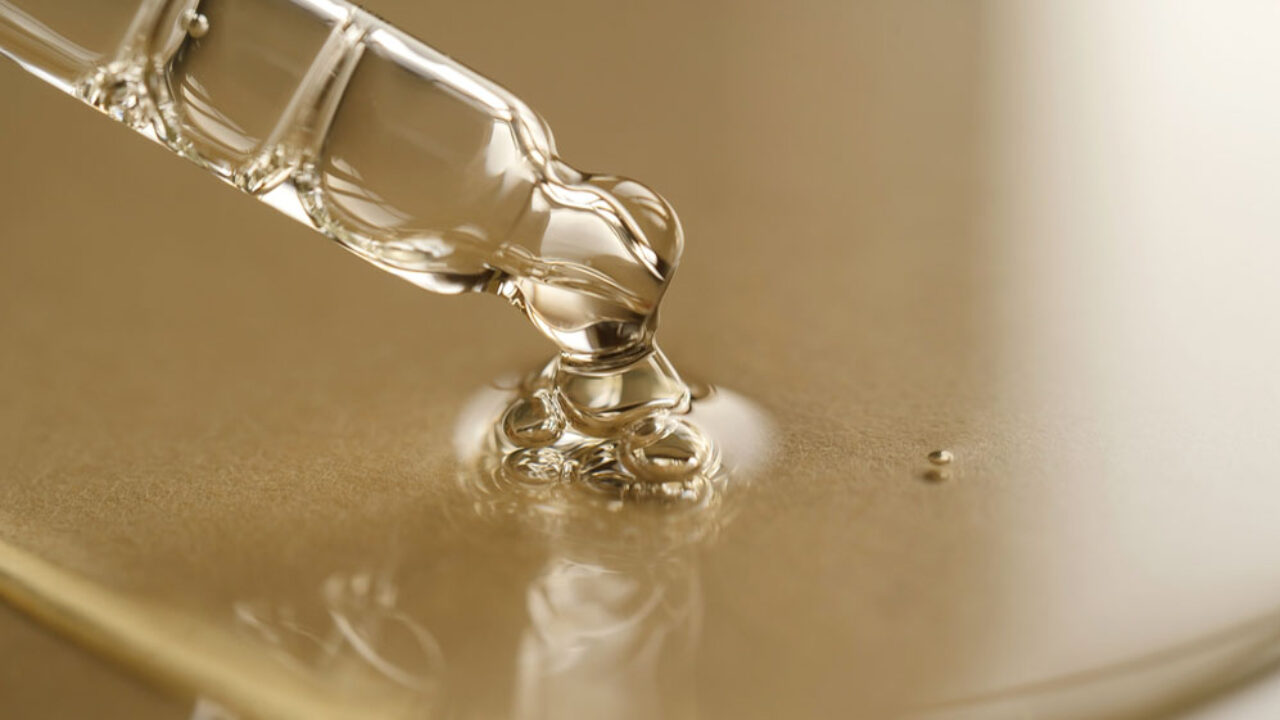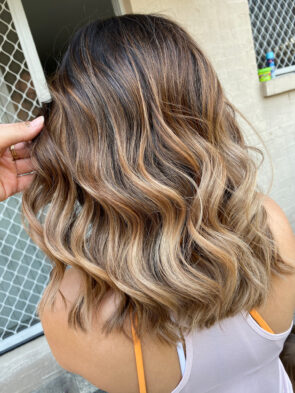
In the latest in our Ingredient Spotlight, we shine a light on squalane – from what is squalane to what it does for skin and hair. Plus our favourite squalane products
JUMP TO SECTION
Click the links below to jump to the relevant section:
What is squalane? Squalane vs squalene
What does squalane do for skin?
If you suffer from acne or eczema, or just want to give your dry skin a boost, then you’ll want to look for the ingredient squalane.
Squalane is good for all skin types and a brilliant alternative if you find other oils too greasy or heavy for your skin.
This makes it especially good for sensitive and acne-prone skin, too.
It can be used by people of any age, and is the by-product of squalene (with an ‘e’), which is the molecule we’re born with and is what makes our skin baby soft.
Read on to learn more about this wonder skincare ingredient.
FURTHER READING: Skincare ingredient checker: Get to grips with what’s in your skincare with our ingredients guide
Below we explain what squalane is and what benefits it brings to the skin as part of our latest Ingredient Spotlight. You can also learn more about other ingredients in our skincare ingredient checker article.
Squalene is a lipid – an organic fatty acid – produced naturally by our own skin cells. It’s the main component in sebum, the sticky oily substance that our bodies’ sebaceous glands produce.
As we get older, in fact as soon as we hit our mid-20s, the levels of squalene in our skin start to drop off and they continue dropping the older we get.
This causes more texture in our skin and can make it feel dry and irritated. Something that is then exacerbated in peri-menopause and menopause.
Squalane is a by-product of squalene. In order to stem the tide, and replenish falling squalene levels you can apply skincare products that contain squalane. It can be confusing!
 Shutterstock/mamabella
Shutterstock/mamabella Squalane itself is lightweight oil used to help replace the natural squalene that you lose with age. It’s a more stable version of the natural emollient and because it mimics the function of squalene found naturally, your skin should accept it and it shouldn’t cause any irritation.
It’s also non-comedogenic meaning it doesn’t clog your pores. Thus making it one of the best emollients to find in a moisturiser, serum, and similar.
As a by-product of squalene, which is a component of sebum, squalane brings a number of benefits that sebum naturally provides. It:
Squalane is often compared to hyaluronic acid because both ingredients are biomimetic – an ingredient that mimics the function your skin naturally produces – and both hydrate skin. The main difference between the two is hyaluronic acid is a humectant, meaning it draws moisture into the skin while squalane is an emollient, which traps moisture in the skin and prevents it from evaporating.
This means the two ingredients complement each other.
Squalane strengthens your skin barrier and helps your skin to retain moisture because it mimics a natural component of sebum. It penetrates deep into your skin to provide intense hydration. It is lightweight, non-greasy, and quickly absorbed, making it an ideal moisturizer for all skin types.
 mamabella | mamabella
mamabella | mamabella It can also protect your skin from free radical damage caused by environmental factors such as UV radiation, pollution, and stress. This can help to prevent premature ageing.
Other benefits of squalane include soothing skin conditions like eczema and psoriasis, as well as calming skin after sun exposure. That’s because squalane has anti-inflammatory properties, which help to improve your skin’s natural healing process.
Although primarily seen as a moisturising ingredient, squalane may also be an effective anti-ageing ingredient. The reason being that it absorbs deep into your skin, adding hydration and therefore lessening the appearance of fine lines and wrinkles.
FURTHER READING: How old does your skin REALLY look? Olay Skin Advisor scans your face to reveal if you’re prematurely ageing
 Shutterstock
Shutterstock Squalane doesn’t just benefit your skin. It’s a great ingredient to use for your hair because it replenishes moisture and protects your hair from further damage.
As a result, squalane is good for fighting frizz, increasing your hair’s shine, and preventing breakage.
Like with skin types, squalane works well for all hair types and because it’s a light oil, a lot goes a long way. Plus, unlike other oils, squalane won’t make your hair look greasy. Although if you have particularly fine hair then you’ll want to use a smaller amount.
If you use heat on your hair from styling products then squalane is a great option for you to replenish the lost moisture in your hair follicles.
If you have an itchy or dry scalp squalane is a great option for alleviating dryness.
This depends on the source of the squalane.
Some squalene and squalane used in skincare come from shark liver oil. This means that approximately six million sharks are killed annually for their livers and thus products containing this form of squalane are not vegan.
However, there is an increasing number of products made using plant-based squalane. This version of squalane can come from olives, sugarcane, rice bran, wheat germ, and palm trees. It works just as well as the non-vegan version and can be a molecular match to the moisture in your skin.
Any product that claims to be vegan and cruelty-free, which contains squalane, will have gotten the ingredient from plant-based sources. That doesn’t mean the squalane products not labelled as vegan are definitely from shark livers however. If you’re unsure, ask the brand or opt for vegan-approved products to be on the safe side.
FURTHER READING: Vegan beauty products: The best affordable vegan makeup and skincare brands in the UK
You can use squalane oil on its own, twice a day as part of your normal skincare routine, or you can buy products that contain squalane.
The benefit of using pure squalane oil – like The Ordinary 100% Plant-derived Squalane – is that the formula won’t be mixed with any other ingredients, which greatly reduces the risk of irritation. If you’d rather have other benefits alongside those offered by squalane, then opt for products that contain the compound alongside others.
 Shutterstock
Shutterstock If you prefer you can add a few drops of squalane oil to your usual moisturiser. This is a great option if you use retinol, especially if you have sensitive skin because it will help reduce any irritation from the retinoid ingredient. It should be noted that you should mix the oil with your moisturiser in your hand before application.
We use the premixed, The Ordinary Retinol 1% with Squalane.
Even though squalane usually absorbs quickly you may find it works better if you add your moisturiser first, add your squalane and then apply more moisturiser – essentially creating a squalane sandwich. This works because your moisturiser will help soak the squalane into your skin.
mamabella tip: Don’t pour the oil into your moisturiser. This is because all skincare is formulated to be balanced, in order to stop it from “going off” and causing problems. Adding anything to it can make it unbalanced and this can reduce the shelf life at best, or cause skin problems at worst.
FURTHER READING: What is retinol and what does retinol do for your skin?
When it comes to applying squalane to your hair you can do it directly onto your scalp. It’s a great opportunity to give your scalp a good massage, too.
You can also apply squalane oil to the mid-shaft and ends of your hair, or mix squalane with your hair treatments. Particularly deep conditioners that can help the squalane better penetrate your hair follicles and give your hair a deeper hydration.
You can also add a little squalane oil to your fingernails by dabbing a few drops of squalane oil into your cuticles. This will really help if you have dry brittle nails.
 mamabella
mamabella The best squalane cleanser we’ve used is the Biossance Squalane and Antioxidant Cleansing Oil. It’s not cheap, at £23, but it’s been the most effective. A cheaper alternative is The Ordinary Squalane Cleanser, which does a similar job but costs £8.
If you’re looking for a squalane moisturiser, we recommend another Biossance product – the Biossance Squalane and Probiotic Gel Moisturiser. You can buy a travel-sized version for £12 if you want to give it a go before committing to a full-sized pot.
And for your hair, we recommend the OUAI Hair Oil (£24). You can also use The Ordinary Squalane Oil (or any pure squalane oil) on your hair, as well as your face.

Kat is a freelance journalist, photographer, and the founder of Simply Gender Free – a company dedicated to smashing gender stereotypes in kids’ products. As a mum of two, Kat is passionate about making the world a better place for the next generation
